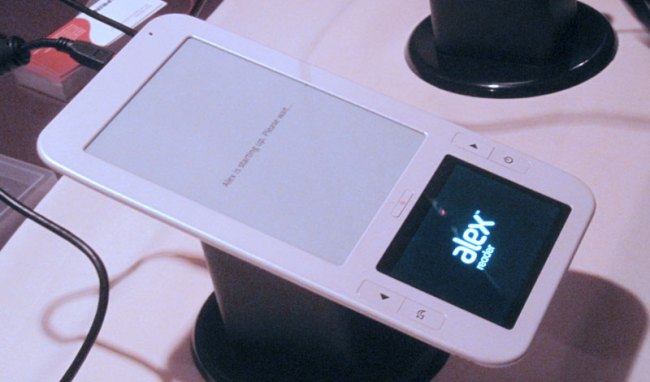
Barnes and Noble may have been the first to append a full-color LCD screen to an otherwise dull e-Ink display with the Nook, but Spring Design knows how to make those pixels sing. The company’s new Alex e-book reader features an enormous color touch screen that you might just mistake for an Android phone at first glance. That’s because functionally, it almost is.
Although the Alex lacks the voice capabilities of an ordinary Android handset like the Motorola Droid, it uses a built-in Wi-Fi to perform many of Android’s other handy tricks, including a full Web browser, e-mail access, and MP3 player. It feels, in many ways, like having a smartphone lashed to the bottom of a Kindle. You can even use it as an auxiliary reading screen for your e-books in the dark, where its backlight makes it handier than the more efficient e-Ink display above.

Hands on, we liked the Alex’s familiar-feeling Android interface, sturdy hardware, and the quality of both screens – especially the bottom one, which is notably larger than the Nook’s. Although a $399 price tag will make it one of the most expensive e-readers on the market at the moment, it’s also fair to call it one of the most functional.
Currently, Spring Design plans to launch the device on February 22.
Editors' Recommendations
- Your guide to the best e-book readers for 2022
- Barnes & Noble refreshes its Nook GlowLight e-book reader
- Amazon offers the best deals on Kindle e-book readers ahead of Black Friday


